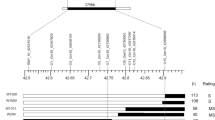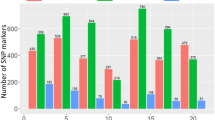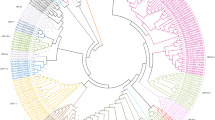Abstract
Soybean (Glycine max L. Merr.) resistance to populations (HgType) of Heterodera glycines I., the soybean cyst nematode (SCN), requires a functional allele at rhg1. An apoptosis-like response in the giant cells formed around the nematode results 24-48 h after feeding commences. This study aimed to identify the role of the three genes within the rhg1 locus, a receptor like kinase (RLK), a laccase and an ion anti-porter. Used were near isogeneic lines (NILs) that contrasted at their rhg1 alleles. Features of the rhg1 locus, the candidate genes and their nascent transcripts and proteins in roots were elucidated. First, evidence for a syntenic gene cluster was found and the effectiveness of SNP probes for distinguishing the homeolog sequence variant on linkage group (Lg) B1 from alleles at the rhg1 locus on Lg G was shown. Analysis of plant s heterozygous at rhg1 showed that the allele for resistance was dominant. The absence of recombination events among the NILs between the RLK and other 2 genes eliminated the possibility of a monogeneic rhg1 locus. Finally, an effect on root development was discovered. A model for multigeneic resistance based on developmental control of root growth including a mechanism for segregation distortion is presented.
Similar content being viewed by others
Article PDF
Author information
Authors and Affiliations
Corresponding author
Rights and permissions
About this article
Cite this article
Lightfoot, D., Srour, A., Afzal, J. et al. The Multigeneic Rhg1 Locus: A Model For The Effects on Root Development, Nematode Resistance and Recombination Suppression.. Nat Prec (2008). https://doi.org/10.1038/npre.2008.2726.1
Received:
Accepted:
Published:
DOI: https://doi.org/10.1038/npre.2008.2726.1



